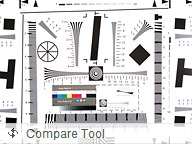Nokia Lumia 920 review: The Luminary
The Luminary
8MP camera with optical stabilization
The Lumia 920 has a 26mm wide-angle lens by Carl Zeiss and a dual-LED flash, but it's unique in the mobile phone world - it's the first one to feature true Optical Image Stabilization (OIS) instead of digital tricks that try (and fail most often than not) to achieve the same result.
The way it works is a gyroscope detects the motion of the phone and the whole optical assembly moves in the opposite direction to cancel out the movement (e.g. camera shake). That happens 500 times a second.
This has obvious advantages during video recording, but it also allows the Lumia 920 to use slower shutter speed in low-light conditions without fearing that camera shake will ruin the photos. That, combined with the f/2.0 aperture, leads to class-leading low-light performance. Keep in mind though that while the OIS works great for static scenes, moving objects in low-light scenes might still turn out blurry due to the slow shutter speed (motion blur).
The technological achievements behind the stabilization system gave Nokia enough grounds to market the smartphone as PureView even though it doesn't have the huge 41MP sensor of the Nokia 808. Instead, the Lumia 920 has that clever multi-aspect 8.7MP imager (1/3", µ 1.4 pixel size) that we know from the Nokia N9. It snaps photos at 3264 x 2448 resolution in 4:3 mode and 3552 x 2000 in 16:9 mode (only 11% drop in resolution). Most other cameras simply discard info from the 4:3 sensor to make it produce a 16:9 photo and lose 25% of the resolution.

The difference between 4:3 and 16:9 photos
The camera UI is pretty simple - you have your viewfinder and some controls on the right. From top to bottom they are the still/video camera toggle, front/back camera toggle, flash mode setting and the Lens button. On the left you have an arrow that takes you to the images taken with the camera, alternatively you can do a swipe gesture too.
The camera app on Windows Phone offers extensive settings, ranging from scenes and effects to white balance, contrast, saturation, sharpness and ISO among others. You have a dedicated Macro focus mode but no face detection. The flash can be set to auto, forced or off.
The shutter key will wake the phone up with a single press and launch the camera app.
Unfortunately, the Lumia 920 is not the fastest shooter around and it takes a couple of seconds before a photo is taken and the camera is ready for the next shot. This is a bigger delay than we're used to see from modern phones.
Lenses is an interesting feature, allowing third-party camera apps to enhance the core camera functionality without the need to access them separately and get use to their different UIs. The so-called Lenses are like plugins for your camera and they are available directly in the native camera app. They show up in the list of installed apps too in case you'd like to pin a Lens to the start screen, for instance.
Nokia has preloaded the Smart Shoot lens on the Lumia 920, which is by far the most powerful, but you can also download the Panorama and Cinemagraph lenses.
Smart Shoot uses Scalado technology (Nokia owns the company) - it shoots multiple photos and lets you pick which one to save (a sort of burst mode). You can also pick the best face and cycle through each facial expression a person made while the camera was snapping photos. The third option is Erase, which will remove moving objects (e.g. someone walking in front of the landmark you're trying to shoot just as you press the shutter).




Smart Shoot snaps several photos • and you can delete a moving object • or pick the best face
Panorama does what it says - you press the shutter and then align the camera as instructed (the app will put circles you have to aim for). It's good, but you always shoot right to left (can't switch direction), which is a bit annoying. Shooting in portrait orientation is impossible too.
Cinemagraph creates photos that are mostly static, but a part of them is animated, it really brings them to life. You have to hold the phone steady while shooting - a tripod works best. When you're done, the Lens will offer two (sometimes three) areas that can be animated and when you pick an area, you can tweak the animation, trim it, and set the loop pattern. This was great since you can get back to the image after the fact and correct it if you didn't get it right the first time around (we did that to reduce camera shake visible in the background).
Here's a Cinemagraph and a panorama we shot with the Lumia 920.
Image quality
We'll split the Lumia 920 camera quality analysis into two parts - daylight and lowlight.
Let's start with looking at photos shot during the day. We'll go right ahead and rip the band aid off for you - the photos are average. We took a Samsung Galaxy S III, a Nokia 808 PureView and an iPhone 5 with us while shooting samples with the 920, so we have grounds for comparison.
The amount of fine detail that the Lumia 920 resolves is good in places but is very inconsistent - some areas look okay, while others are smudged beyond recognition. We suspect the noise reduction and the sharpening afterwards is responsible to some degree. Straight edges have artifacts and there are halos in areas of higher contrast. Fine detail like foliage or small letters gets smudged heavily.
White balance tends towards yellow and colors are way oversaturated and unrealistic. The dynamic range is okay, but the image processing leaves shadowy areas dark and you'll need to put the photos through an image editing program if you want to bring their detail out (that would increase the noise though).




Nokia Lumia 920 camera samples (4:3 mode)




Nokia Lumia 920 camera samples (4:3 vs. 16:9)

Nokia Lumia 920 macro camera sample
Here are 100% crops from photos taken with the four phones of the same scene. You can find the full resolution shots below.





Nokia Lumia 920 • Nokia 808 PureView • Samsung Galaxy S III • Apple iPhone 5
We waited for the sun to set and shot our ISO chart on the available natural light though the big north window. We used the Nokia Lumia 920, along with the 808 PureView, Samsung Galaxy S III and Apple iPhone 5. The photos were taken at automatic settings (with the flash off) and we also took photos with Night mode enabled on the Lumia 920 and Galaxy S III (the 808 also has a night mode, but it drops the resolution to 5MP so we're excluding it).
It's also important to note that we held the phones in the hand rather than put them on a tripod. The best and worst photos for each phone were selected and we made a collage of 100% crops (best photos are on the left, worst on the right).
With or without Night mode enabled, the Nokia Lumia 920 has a clear advantage. It produced bright, crisp (-ish) photos with relatively little noise. Enabling Night mode lowers the shutter speed, which results in more motion blur in the worst case scenario. This makes Night mode better suited for static scenes with little or no movement, while automatic mode will do better in more dynamic scenes.
The Nokia 808 PureView put up a good fight (hooray for supersampling), but still there was more noise than in the 920 photos (which will become even more apparent if you try to brighten the photo in an image editor). Once again, best results are achieved with a steady hand. The 808 has an ace up its sleeve though - if your subject is within range of its xenon flash, it will easily blow the competition out of the water come night time.
The Night mode on the Samsung Galaxy S III made a huge difference, but it's quite sensitive to shaky hands due to the lower shutter speed and lack of stabilization. Still, considering it has neither OIS nor super sampling to rely on, it does well.
The iPhone 5 doesn't have a dedicated Night mode. Its photos came out generally quite dark (it shows reluctance to lower the shutter speed below reasonable levels). Quite often however we saw quite noisy or quite blurry results too.

Photo quality comparison
The Nokia Lumia 920 enters our tool, where you are free to compare it to any of the smartphones in our data base - the tool's page will give you information on what to watch out for.
By the way, you can use the tool's scaling option to scale the 38MP photo from the 808 PureView to 8MP, which will make comparing it to the 920's photo easier.
Reader comments
- 144
- 26 Jun 2023
- GXs
Nou anymore no
- Anonymous
- 17 Oct 2021
- XE$
Does it operate WhatsApp






